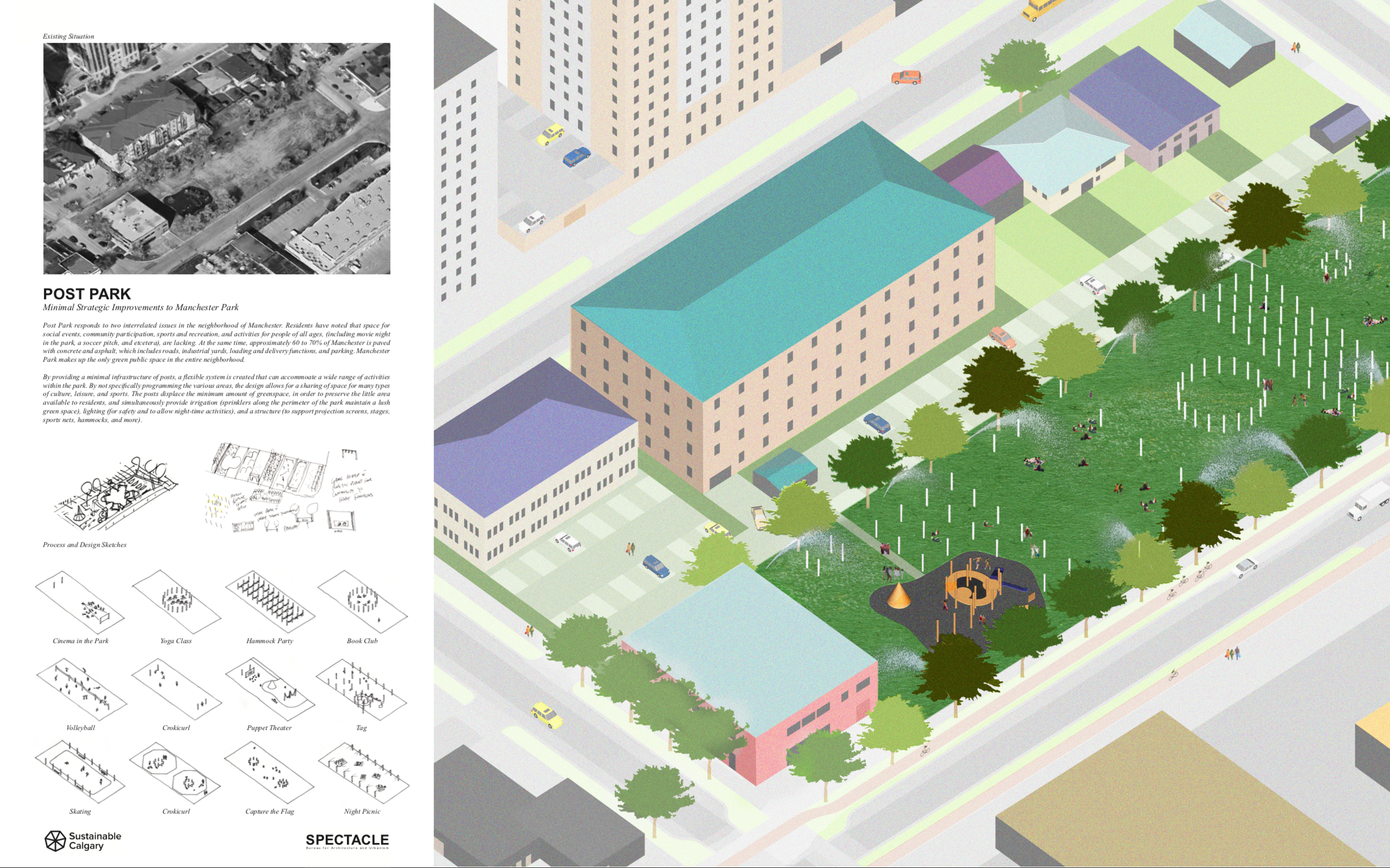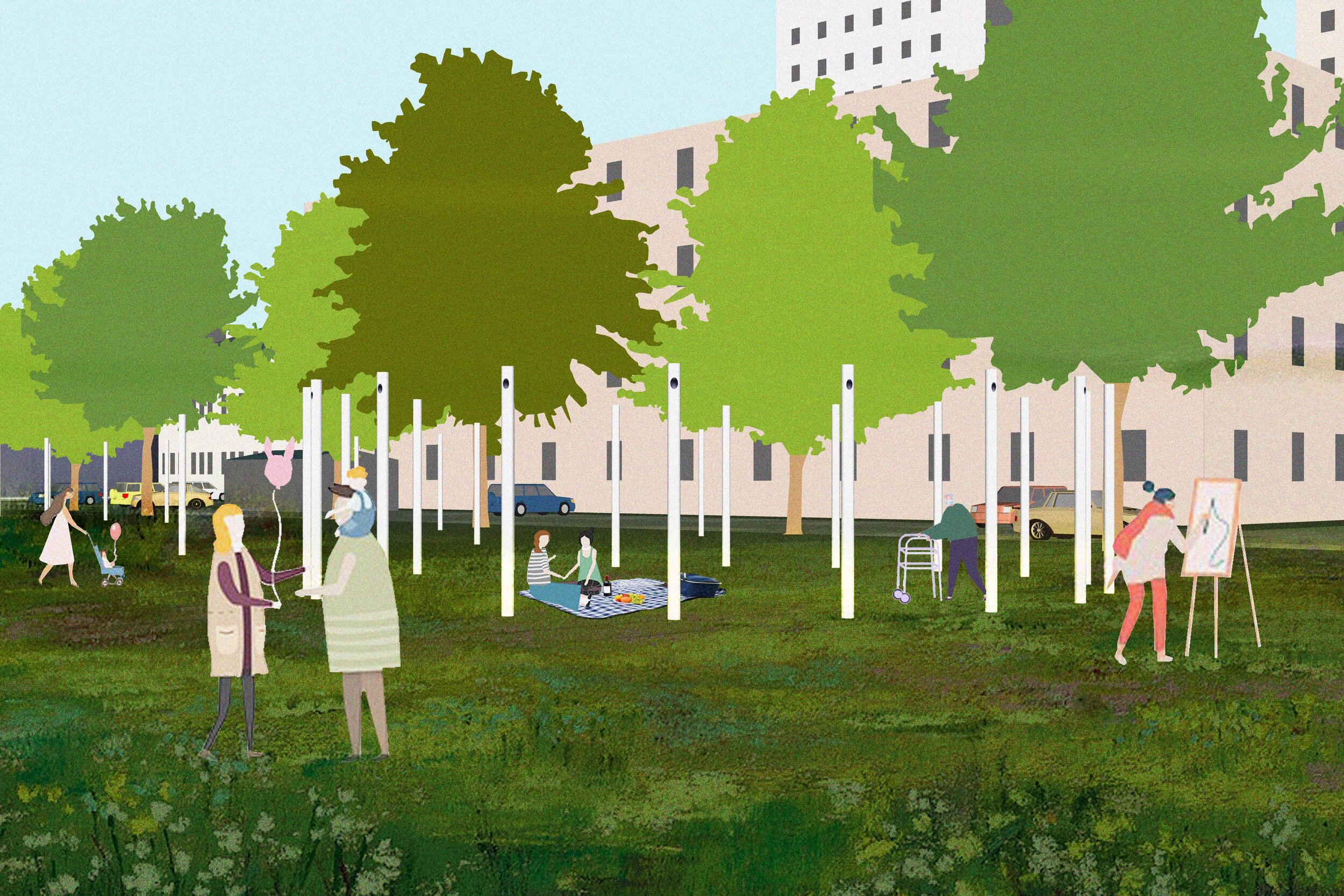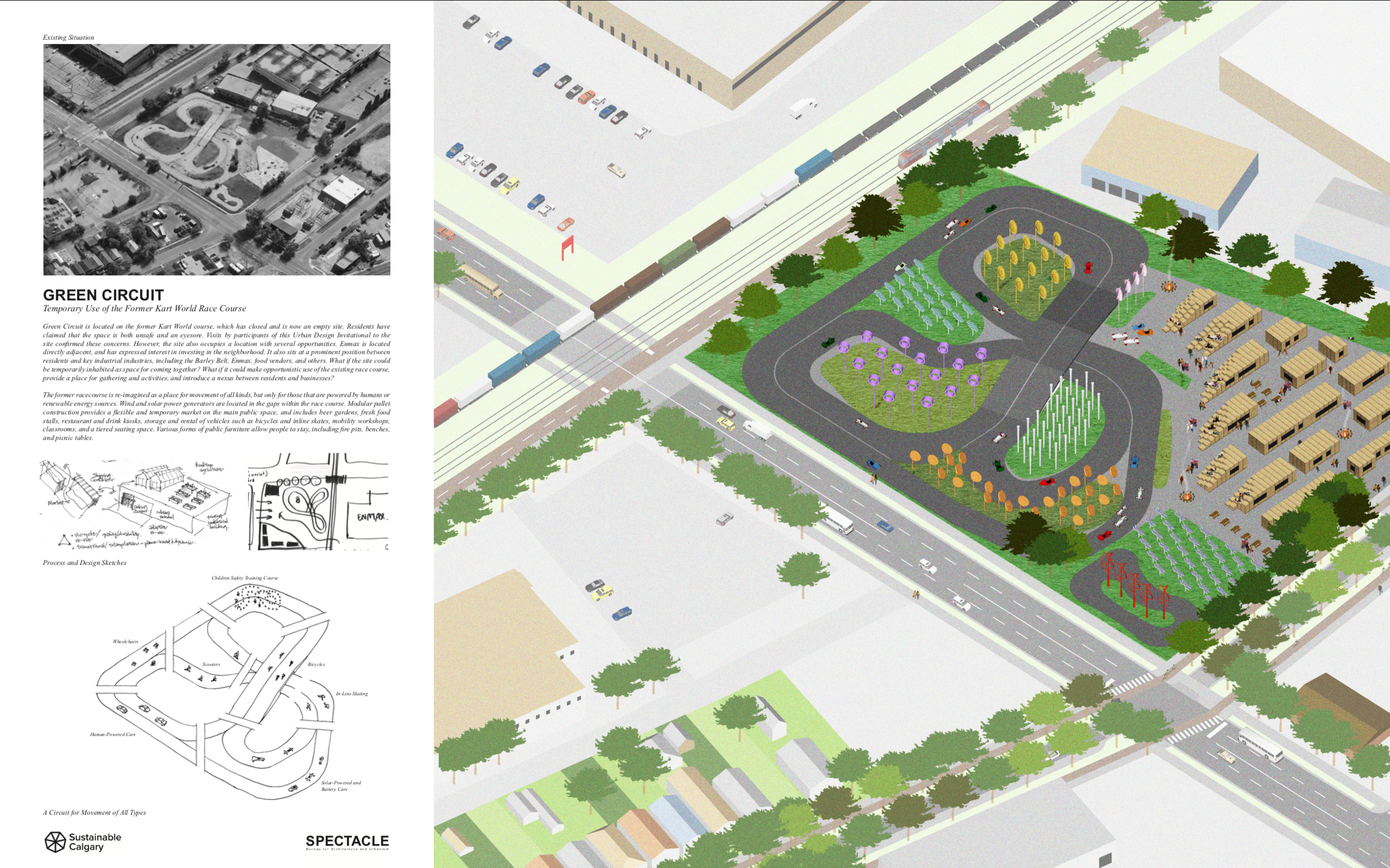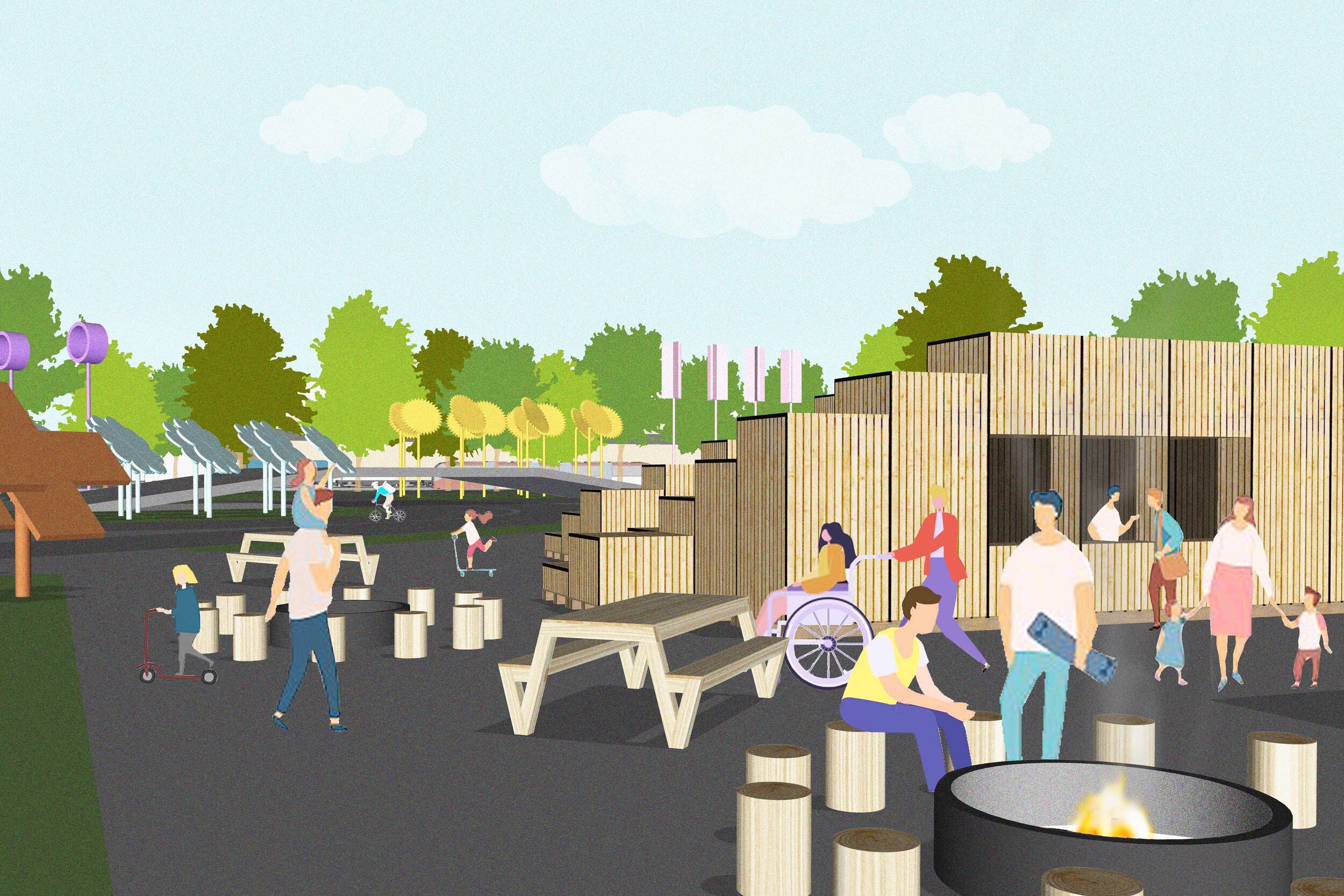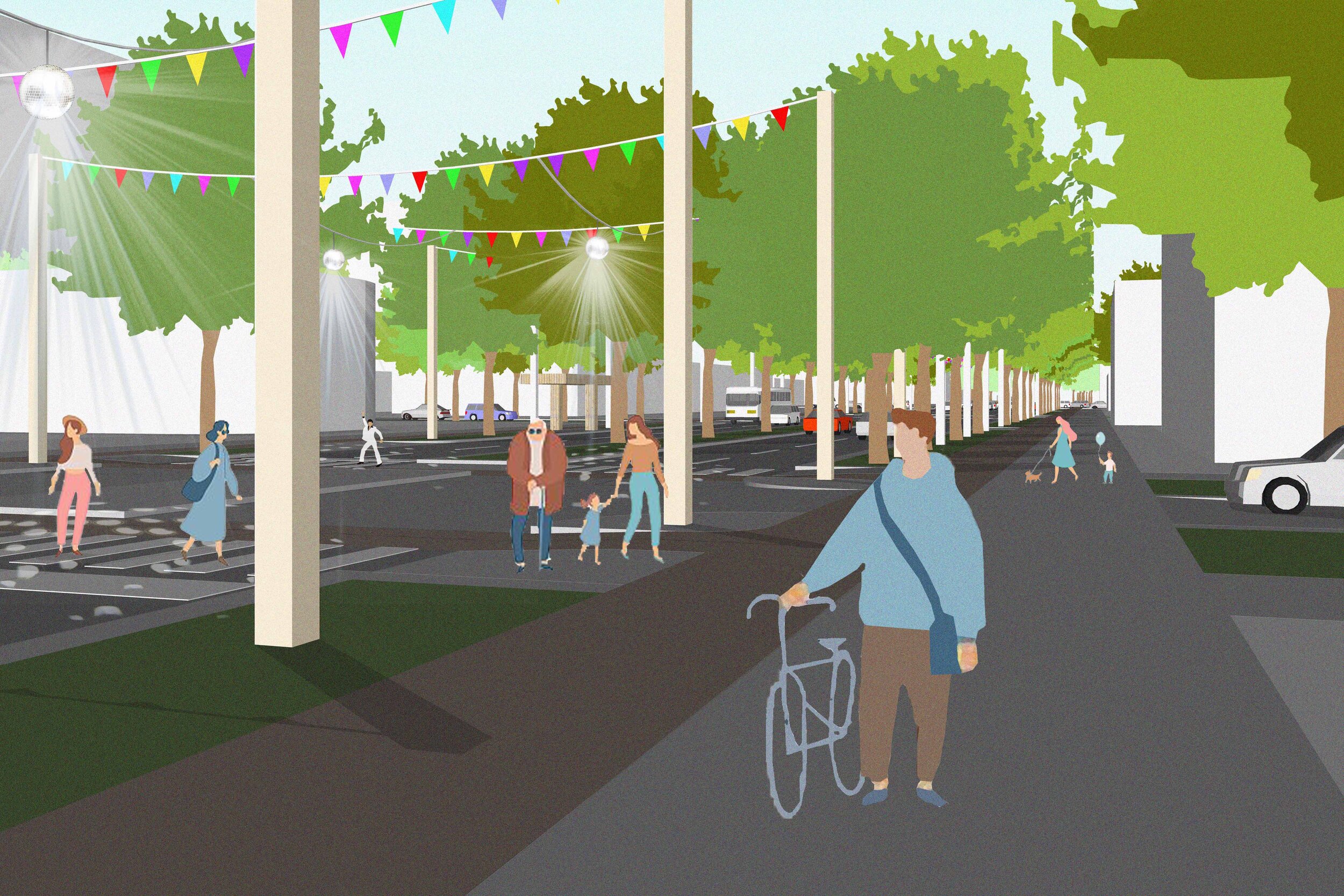Manchester Design Schemes
PUBLICATION
The exploration stage of our co-design work with the Manchester community. In contrast to the Manchester masterplan that Spectacle created for us in 2018, we prioritized design concepts implementable within two years - so we could start the ball rolling to meet the needs of residents and start prototyping a “sustainable” inner-city community. Three design schemes emerged for Manchester: The Shift, the Green Circuit and Post Park, which will go to the community for voting and feedback.
POST PARK: Strategic Improvements to Manchester Park
Post Park responds to two interrelated issues in the neighborhood of Manchester. Residents have noted that space forsocial events, community participation, sports and recreation, and activities for people of all ages, (including movie night in the park, a soccer pitch, and etcetera), are lacking. At the same time, approximately 60 to 70% of Manchester is paved with concrete and asphalt, which includes roads, industrial yards, loading and delivery functions, and parking. Manchester Park makes up the only green public space in the entire neighborhood. By providing a minimal infrastructure of posts, a flexible system is created that can accommoate a wide range of activities within the park. By not specifically programming the various areas, the design allows for a sharing of space for many types of culture, leisure, and sports. The posts displace the minimum amount of greenspace, in order to preserve the little area available to residents, and simultaneously provide irrigation (sprinklers along the perimeter of the park maintain a lush green space), lighting (for safety and to allow night-time activities), and a structure (to support projection screens, stages, sports nets, hammocks, and more).
GREEN CIRCUIT: Temporary Use of the Former Kart World Race Course
Green Circuit is located on the former Kart World course, which has closed and is now an empty site. Residents have claimed that the space is both unsafe and an eyesore. However, the site also occupies a location with several opportunities. Enmax is located directly adjacent. It sits at a prominent position between residents and key industrial industries, including the Barley Belt, Enmax, food vendors, and others. What if the site could be temporarily inhabited as space for coming together? What if it could make opportunistic use of the existing race course, provide a place for gathering and activities, and introduce a nexus between residents and businesses? The former racecourse is re-imagined as a place for movement of all kinds, but only for those that are powered by humans or renewable energy sources. Wind and solar power generators are located in the gaps within the race course. Modular pallet construction provides a flexible and temporary market on the main public space, and includes beer gardens, fresh food stalls, restaurant and drink kiosks, storage and rental of vehicles such as bicycles and inline skates, mobility workshops, classrooms, and a tiered seating space. Various forms of public furniture allow people to stay, including fire pits, benches, and picnic tables.
THE SHIFT: Street Improvements for Safety, Dignity, and Joy
Residents have raised concerns about safety throughout the neighbourhood. The Shift introduces enhanced sidewalks, crossings, active transportation, green surfaces and trees, lighting, public furniture, bus stations, and other place-making elements. Bunting that frames 58 Avenue recalls the predominant auto-focus of the area, and introduces a gateway to Manchester residential, includes abstractions of the flags of residents, as well as business owners and employees, and integrated lighting at both vehicular and pedestrian scale. Disco-ball crossings, together with enhanced crossings, create ‘Beacons of Humanity’ that enhance safety through visibility. Raised crossings and other traffic calming measures, at streets and interior avenues, slow traffic. Bicycle lanes connect through the neighborhood to East-West as well as North-South networks. Human-scaled adjustable lighting allows residents to appropriate their own streets for other uses. Street redesign is applied throughout for traffic-calming, pedestrian safety and dignity, and multimodal transportation.

